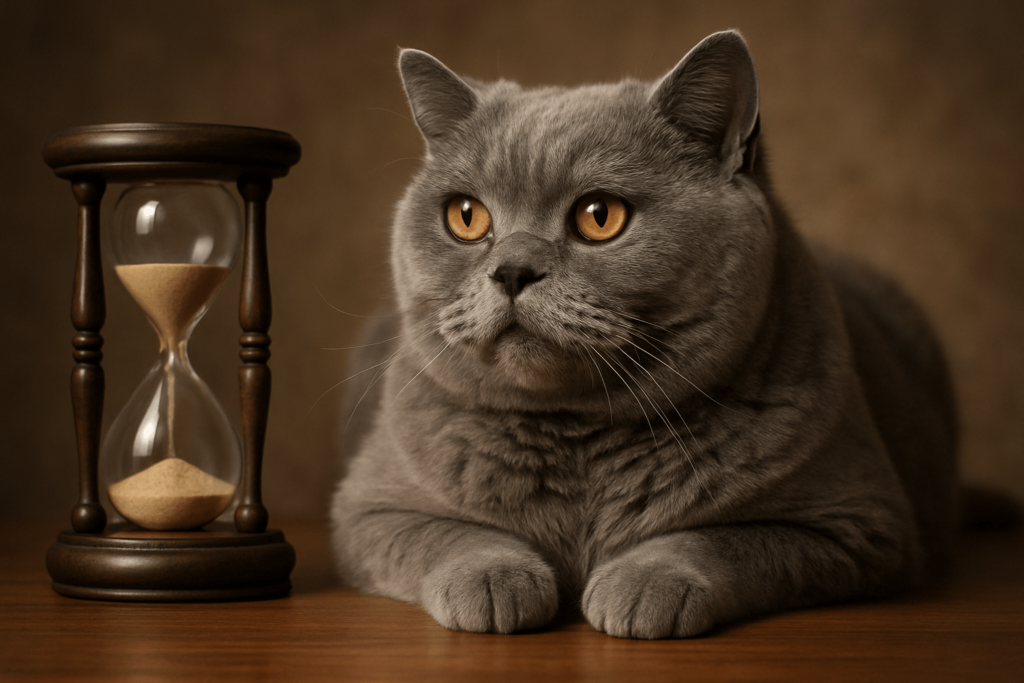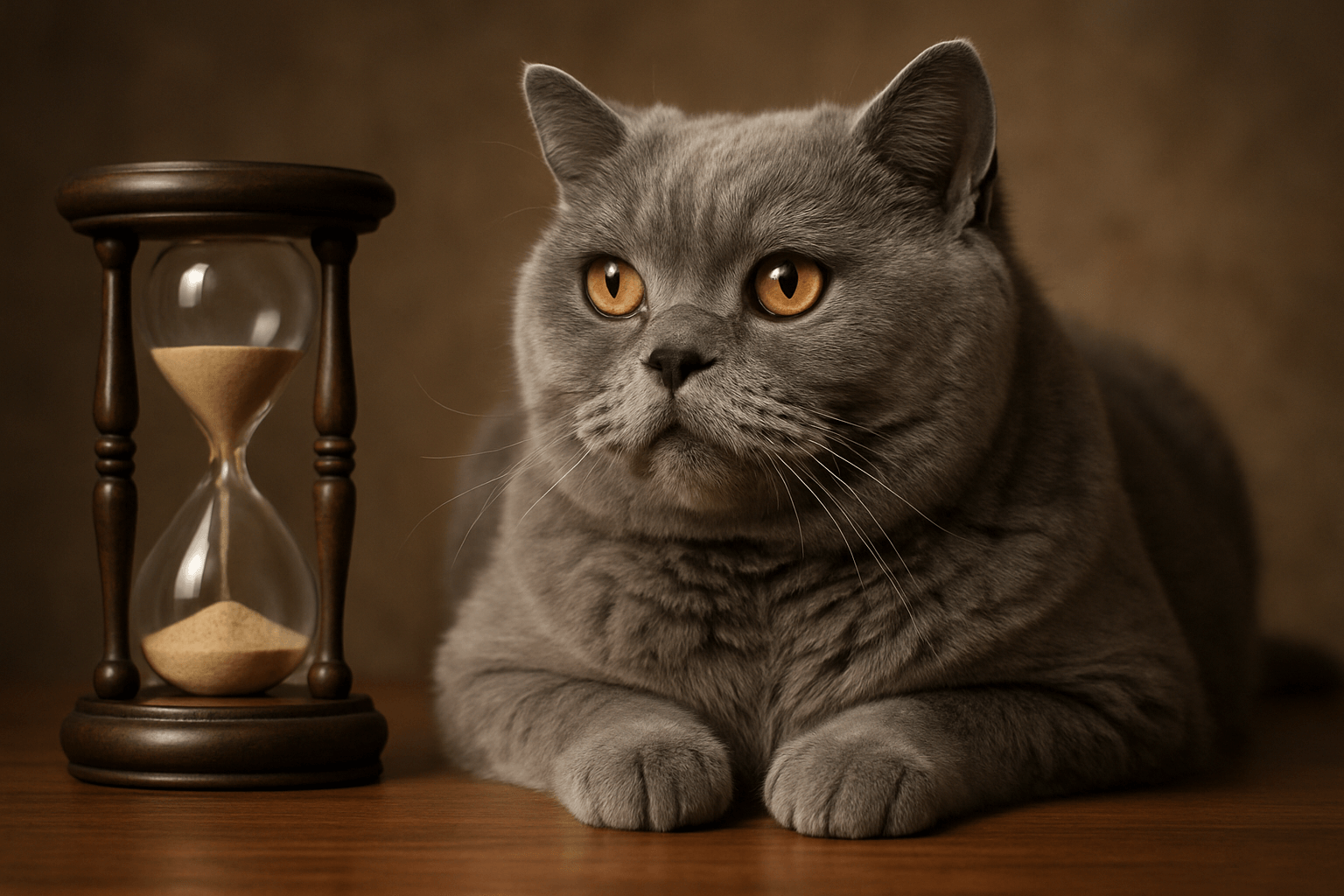British Shorthair Cat Lifespan: How to Help Your Gentle Giant Thrive for Decades
The British Shorthair is more than just a cat with a round face and plush coat—it’s a quiet companion, a steadfast presence, and a living testament to patience and resilience. Known for their calm demeanor and timeless elegance, these cats often become cherished members of the family for many years. But just how long can you expect your British Shorthair to live? The answer isn’t simple—but with the right care, their lifespan can stretch far beyond the average, turning 12 years into 18, 20, or even more. This guide reveals everything you need to know about the British Shorthair cat lifespan—and how to give yours the longest, healthiest life possible.
Why British Shorthair Cats Live Longer Than Most Breeds
British Shorthairs are naturally robust, with a genetic predisposition for longevity. Their sturdy build and calm temperament contribute to fewer stress-related illnesses and a lower risk of injury. Here’s what makes them such enduring companions:
Sturdy Genetic Foundation:
Bred for centuries in Britain as working cats, they’ve evolved to be hardy and disease-resistant.Low Stress Sensitivity:
Unlike more high-strung breeds, British Shorthairs adapt well to routine, reducing anxiety-related health issues.Slower Metabolism:
Their calm nature means less frantic energy expenditure, which may contribute to slower aging.Minimal Breed-Specific Disorders:
Compared to pedigree cats like Persians or Siamese, they have fewer inherited structural problems.Strong Immune Response:
Their overall resilience often allows them to fight off common infections more effectively than other breeds.
This isn’t luck—it’s biology. When you bring home a British Shorthair, you’re not just getting a cute face. You’re welcoming a cat built to last.

The Average Lifespan of a British Shorthair: What to Expect
While many cats live 12–15 years, British Shorthairs consistently outperform the average. Understanding the typical range helps set realistic expectations—and inspires proactive care.
Typical Range: 12–17 Years
Most well-cared-for British Shorthairs live comfortably within this window, enjoying good health into their senior years.Excellent Care Extends Life to 18–20+ Years
With optimal nutrition, regular vet visits, and a safe environment, many reach their late teens or early twenties.Indoor Cats Live Significantly Longer
Outdoor exposure increases risks from traffic, predators, disease, and toxins—indoor living is non-negotiable for longevity.Spayed/Neutered Cats Live Longer
Reduced risk of reproductive cancers and less roaming behavior directly contributes to extended life.Weight Management Is Critical
Obesity is the #1 lifespan killer in this breed. A lean British Shorthair can outlive an overweight one by 3–5 years.
The number isn’t magic—it’s a reflection of your commitment. Every meal, every vet visit, every cuddle on the sofa adds up.
Check this guide 👉British Shorthair Cat Price: Best 7 Expert Tips!
Check this guide 👉Manx Cat Lifespan: Best 7 Expert Tips!
Check this guide 👉Singapura Cat Lifespan: Best 7 Expert Tips!
| Lifespan Influencer | Impact on Longevity |
|---|---|
| Diet Quality (High-Protein, Low-Carb) | Reduces obesity, diabetes, and kidney strain—critical for this breed. |
| Regular Veterinary Checkups (Annual/Biannual) | Early detection of HCM, kidney disease, or dental issues adds years. |
| Indoor-Only Lifestyle | Eliminates trauma, infection, and environmental toxins—can extend life by 5+ years. |
| Weight Control (Ideal BMI) | Prevents joint stress, heart disease, and insulin resistance—major killers in British Shorthairs. |
| Mental Stimulation & Play | Reduces boredom-related stress and keeps muscles/joints active into old age. |
Top Health Threats That Shorten British Shorthair Lifespan
Even the hardiest breeds aren’t invincible. British Shorthairs are prone to specific conditions that, if ignored, can drastically cut their lives short.
Hypertrophic Cardiomyopathy (HCM):
The most common heart disease in cats. It often shows no symptoms until it’s advanced—regular echocardiograms are essential.Obesity and Related Diabetes:
Their slow metabolism and love of food make them prone to weight gain. A 15-lb British Shorthair is already at risk.Dental Disease (Gingivitis, Resorptive Lesions):
Painful and often overlooked. By age 7, over 70% of cats have significant dental decay—cleanings are non-negotiable.Chronic Kidney Disease (CKD):
Especially common in older cats. Early detection through bloodwork and urine tests can slow progression dramatically.Arthritis and Joint Degeneration:
Their sturdy frame puts pressure on joints. Weight control and joint supplements can preserve mobility into their teens.
These aren’t inevitable. They’re preventable—with vigilance, not luck.
How Nutrition Directly Impacts Your British Shorthair’s Longevity
Food isn’t just fuel—it’s medicine. And for British Shorthairs, the wrong diet is one of the fastest paths to a shortened life.
Prioritize High Animal Protein:
Look for meat as the first ingredient—chicken, turkey, or fish. Avoid meals with corn, soy, or wheat fillers.Limit Carbohydrates to Under 10%:
Cats are obligate carnivores. High-carb diets trigger insulin spikes, leading to obesity and diabetes.Feed Wet Food as the Primary Diet:
At least 70% wet food ensures hydration, which protects kidneys and urinary tract—vital for long-term health.Avoid Free Feeding Dry Food:
Dry kibble encourages overeating. Use portion-controlled meals twice daily to maintain ideal weight.Supplement with Taurine and Omega-3s:
These support heart and brain health. Many premium brands include them—but verify labels.
A British Shorthair fed like a wild predator—high protein, low carb, high moisture—will outlive one fed like a human.
The Role of Preventative Vet Care in Maximizing Lifespan
Routine checkups aren’t optional. They’re the cornerstone of a long, pain-free life for your British Shorthair.
Annual Bloodwork and Urinalysis (Start at Age 7):
Detects early kidney disease, liver issues, and thyroid imbalance before symptoms appear.Biannual Dental Exams:
Professional cleanings under anesthesia remove plaque buildup that causes systemic infection.Heart Screening for HCM (Every 1–2 Years After Age 5):
An echocardiogram is the only reliable way to catch this silent killer.Vaccinations and Parasite Prevention:
Even indoor cats need core vaccines and monthly flea/tick/heartworm prevention.Body Condition Scoring at Every Visit:
Your vet should assess your cat’s weight—not just tell you “they look fine.” Use the 1–9 scale.
Prevention isn’t expensive. It’s priceless. A $150 blood panel today can prevent a $3,000 emergency bill—and years of suffering—tomorrow.
Creating a Safe, Enriched Home Environment for Longevity
A British Shorthair doesn’t need flashy toys—but they do need a space that supports their physical and mental well-being.
Provide Vertical Space:
Even slow-moving cats enjoy climbing. A tall cat tree helps maintain muscle tone and reduces joint stress.Keep the Environment Quiet and Predictable:
Loud noises, sudden changes, or multiple pets can trigger chronic stress—leading to immune suppression.Ensure Easy Access to Litter Boxes:
Place boxes on every floor. Older cats with arthritis struggle with high sides or stairs.Maintain Consistent Routine:
Feed, play, and sleep at the same times daily. Predictability reduces anxiety and promotes stability.Offer Gentle Mental Stimulation:
Puzzle feeders, window perches, and rotating toys prevent boredom—a silent killer of senior cats.
A calm, structured home isn’t just comfortable—it’s a longevity strategy.
Recognizing the Signs of Aging in Your British Shorthair
As your cat enters their senior years (10+), subtle changes signal the need for adjusted care. Don’t dismiss them as “just getting old.”
Reduced Grooming:
A dull, matted coat often means arthritis or dental pain is making self-care painful.Increased Sleeping or Lethargy:
While they’re naturally calm, extreme inactivity may indicate pain, kidney disease, or hypothyroidism.Weight Loss Despite Normal Appetite:
A classic sign of hyperthyroidism or cancer—common in older cats.Changes in Litter Box Habits:
Urinating outside the box, straining, or increased frequency can mean CKD, UTI, or arthritis.Cloudy Eyes or Hearing Loss:
Normal aging, but monitor for cataracts or ear infections that need treatment.
These aren’t signs to accept—they’re signs to act on. Early intervention preserves quality of life.
Frequently Asked Questions About British Shorthair Cat Lifespan
How long do British Shorthair cats typically live?
Most live 12–17 years, but with excellent care, many reach 18–20+ years. Some even live into their early 20s.
Are British Shorthairs prone to any genetic diseases?
Yes. Hypertrophic Cardiomyopathy (HCM) is the most common. Obesity, dental disease, and chronic kidney disease are also frequent concerns.
Does spaying or neutering increase lifespan?
Absolutely. It eliminates risks of reproductive cancers and reduces roaming behavior, which lowers injury risk.
Should I feed my British Shorthair wet or dry food?
Wet food should be the primary diet (70%+) to ensure hydration and prevent obesity and kidney issues. Dry food can be used sparingly.
At what age should I start senior care for my British Shorthair?
Begin enhanced monitoring at age 7—annual bloodwork, dental exams, and body condition assessments.
Love Them Long, Love Them Well
A British Shorthair doesn’t demand attention—but they deserve it. Their quiet purrs, steady presence, and gentle gaze aren’t just comforting—they’re gifts that last for decades. Their lifespan isn’t written in stone. It’s written in your choices: the food you serve, the vet visits you schedule, the quiet evenings you spend beside them, the litter boxes you clean, the weight you manage, the love you show when they’re slow to rise in the morning.
Canned Pumpkin for Cat Diarrhea: Best 7 Expert Tips! Natural remedy to firm stools, soothe upset bellies, and support gut health safely.
Can a Cat Give You Scabies? Best 7 Expert Tips! Discover the truth about feline mites, human skin risks, and how to protect yourself—without panic.
Cat Flea vs Human Flea: Best 7 Expert Tips! Discover the truth about bites, species, and how to eliminate infestations for good.
Weird Cat Behaviors: Best 7 Expert Tips! Discover why cats do strange things—and how to understand, not punish, their instincts for a happier home.
Canned Pumpkin for Cat Diarrhea: Best 7 Expert Tips! Natural remedy to firm stools, soothe upset bellies, and support gut health safely.
Can a Cat Give You Scabies? Best 7 Expert Tips! Discover the truth about feline mites, human skin risks, and how to protect yourself—without panic.
Cat Flea vs Human Flea: Best 7 Expert Tips! Discover the truth about bites, species, and how to eliminate infestations for good.
Weird Cat Behaviors: Best 7 Expert Tips! Discover why cats do strange things—and how to understand, not punish, their instincts for a happier home.





